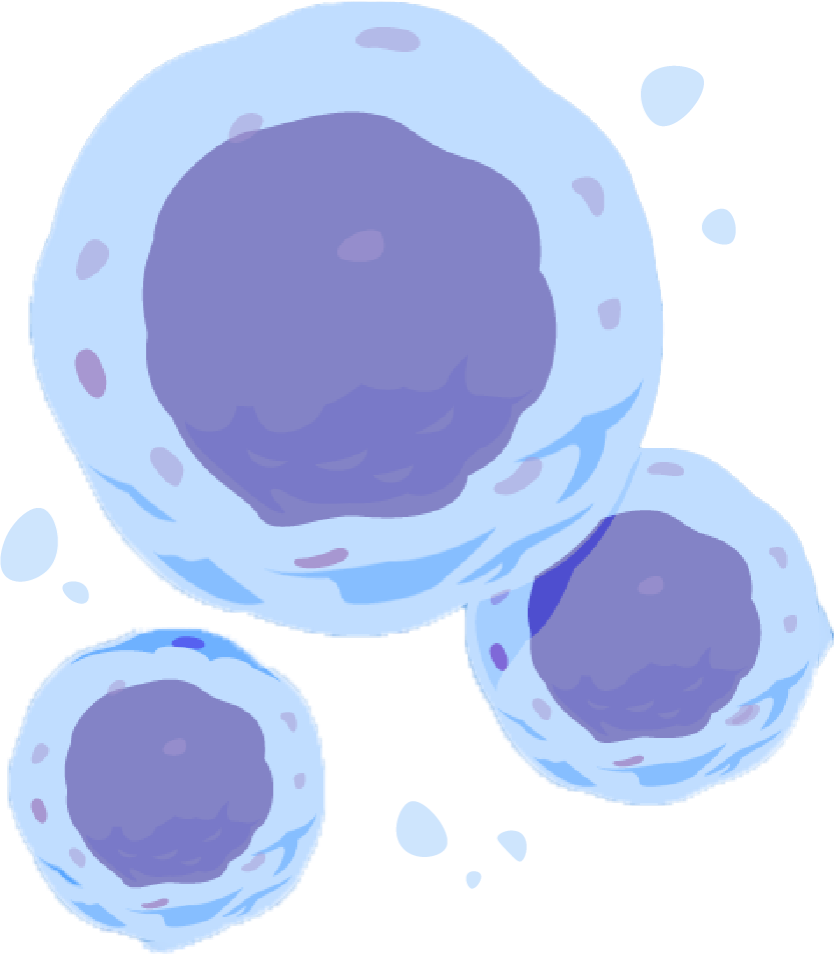01 Understanding Genetics and Your Body
Section 5
What is a Gene Mutation?

Learning Goal
To understand the different types of gene mutations and how they occur.
A gene mutation or variant is a permanent change in the DNA sequence that a gene is made of, making the sequence different from what is found in most people. Variants can be small enough to affect a single DNA base pair, or large enough to affect a wide segment of a chromosome that includes multiple genes. These changes can be harmful, beneficial, or have no effect.1
Most disease-causing gene variants are uncommon in the general population, although other genetic changes occur more frequently. Genetic alterations that occur in more than 1% of the population are called polymorphisms, and are common enough to be considered a normal variation in the DNA. Polymorphisms are responsible for many of the normal differences between people including eye color, hair color, and blood type. While many polymorphisms have no negative effects on a person’s health, some of these variants may increase a person’s risk of developing certain disorders.2
There are two major types of gene variants1:
- Hereditary, also known as germline mutations or variants, are those that are inherited from one or both parents and are present in virtually every cell in the body throughout a person’s life.
- These variants were present in the parent’s egg or sperm cells, which are also called germ cells.
- In human reproduction, when a sperm cell combines with an egg cell, the resulting fertilized egg cell receives DNA from both parents.
- If there is a variant in the DNA, that variant will be present in each of the cells of the child that grows from the fertilized egg.
- Acquired (or somatic) mutations arise at some time during a person’s life and are typically present only in certain cells, not in every cell in the body.1
- These changes can result from environmental stressors such as ultraviolet radiation from the sun, or from an error in DNA replication during cell division.
- Acquired mutations in somatic cells (cells other than sperm and egg cells) cannot be passed to the next generation.
Some genetic changes are classified as de novo (new) variants, which can be either hereditary or somatic.1
- In some cases, a de novo variant may arise in a person’s egg or sperm cell but is not present in any of the person’s other cells.
- In other cases, a de novo change may take place in the sperm, or in the fertilized egg shortly after the egg and sperm cells combine, though it is often impossible to pinpoint exactly when a de novo change occurred.
- As the fertilized egg divides, the variant may be present in each resulting cell in the growing embryo.
- When a child with a genetic condition has a variant in every cell in the body but the parents do not, and there is no family history of the condition, the condition may be due to a de novo change.
Topic 1: Section 6
Understanding Genetic Disorders?
See Understanding Genetic Disorders for additional information on how a variation in a gene (known as a genetic variant or mutation) can cause a genetic condition.
Additional Interesting Fact
There are many different ways that the sequence of DNA in a gene can be changed. Each change to a single gene can affect protein production or protein function. The overall effect on an individual’s health will depend on where the change occurs and where the change alters the function of essential proteins. Here are a few examples of genetic variants1:
- Missense variant: a change in one DNA base pair that causes one amino acid to be swapped out for another in the protein made by the gene
- Nonsense variant: a change in one DNA base pair that causes the DNA sequence to prematurely stop building a protein
- Insertion: the addition of a few DNA bases. As a result, the protein normally made by the gene is not made or may not function properly
- Deletion: the removal of a few DNA bases. Small deletions may take out one or a few base pairs in a gene, while larger deletions can take out an entire gene or neighboring genes. The deleted DNA may alter the production or function of the resulting protein(s)
- Duplication: occurs when a short segment of DNA is improperly copied one or more times. A duplication may alter the function of the resulting protein
- Frameshift: occurs when the addition or loss of DNA bases changes a gene’s reading frame, which consists of groups of three bases that each code for one amino acid. A frameshift variant shifts the grouping of these bases and changes the code for amino acids. The resulting protein usually does not function properly. Insertions, deletions, and duplications can all be frameshift variants
Key Learnings
A genetic variant is a permanent change in the DNA sequence that a gene is made of, making the sequence different from what is found in most people.
Many polymorphisms — genetic alterations that occur in more than 1% of the population — have no negative effects on a person’s health, though some may increase a person’s risk of developing certain disorders.
Hereditary variants are inherited from a parent and are present in virtually every cell in the body throughout a person’s life.
Acquired (or somatic) variants arise at some time during a person’s life and are present only in certain cells.
Continue learning about genetics and your body in the next section
Section 6
Understanding Genetic Disorders
To understand the role of genetics in disease.
References
- Help me understand genetics: variants and health. U.S. National Library of Medicine, National Institutes of Health, U.S. Department of Health and Human Services; 2021. https://ghr.nlm.nih.gov/primer/mutationsanddisorders/genemutation. Accessed December 21, 2021.
- How mutations occur. In: Bartee L. MHCC Biology 112: Biology for Health Professions; 2021. https://openoregon.pressbooks.pub/mhccbiology112/chapter/how-mutations-occur/#:~:text=Most%20disease%2Dcausing%20gene%20mutations,normal%20variation%20in%20the%20DNA. Accessed December 21, 2021.